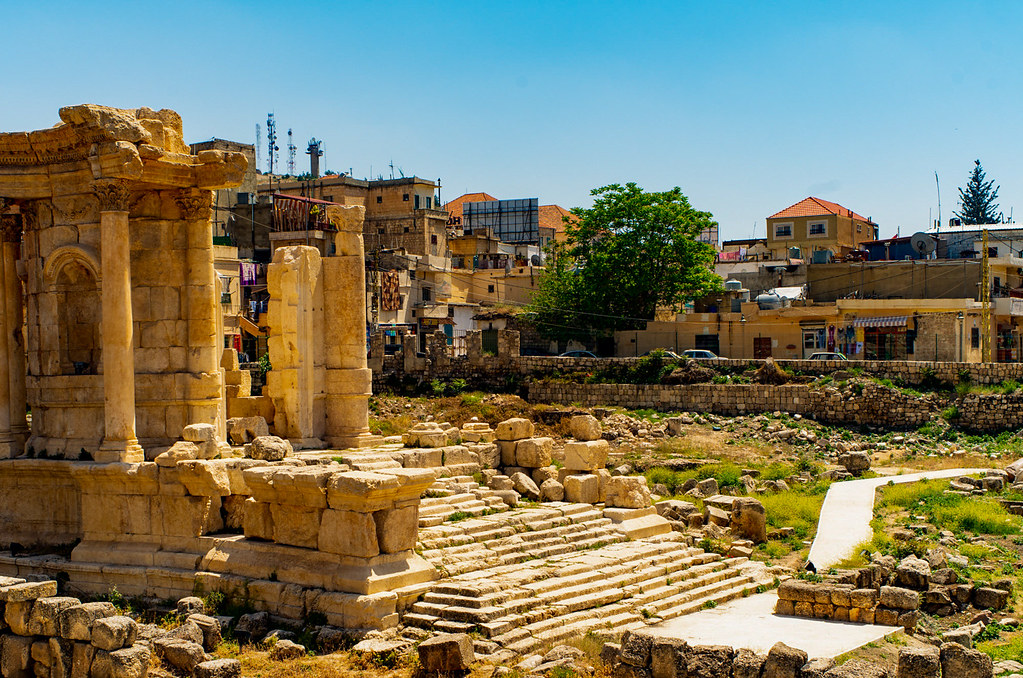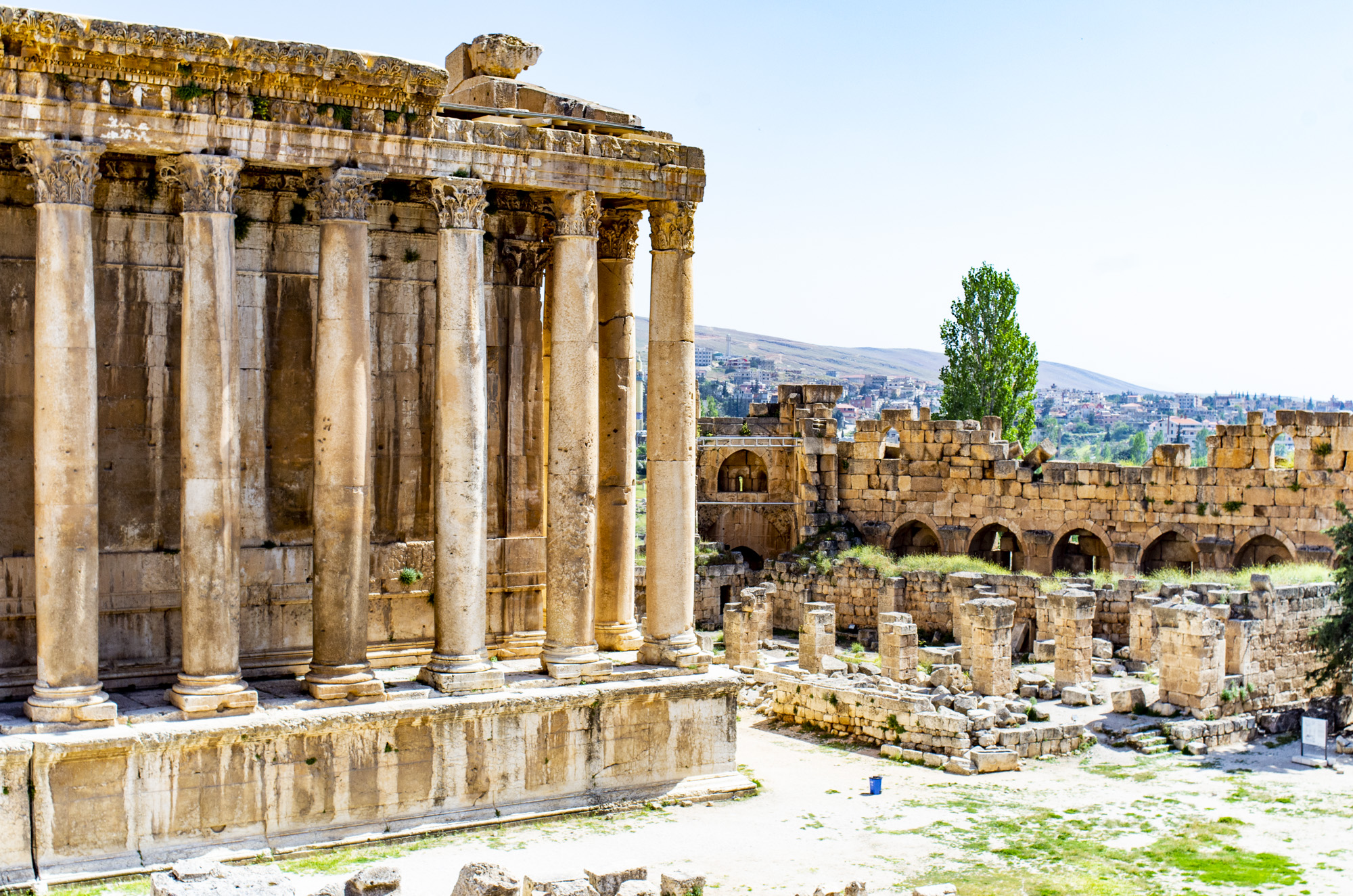Baalbek is a relatively long drive from Beirut with changing minibuses, but it is really worth it. Baalbek is such an amazing gem, which so few tourists visit. In fact, being located in the Bekaa Valley, it is one of the least visited UNESCO World Heritage sites.

You can get here by going to Cola intersection in Beirut and ask the drivers. As we found out, there are no direct minibuses (or maybe we couldn’t find them), so you should go to Chtoura, where you will change to another mini-bus going to Baalbek. The minibuses stop very close to the archaeological site. This will cost about 6-7 USD overall.
When entering Bekaa Valley, you will notice a number of checkpoints, but nobody stopped the minibuses we were on either while entering the valley or while leaving. We saw a number of soldiers on literally every square, sandbags in quite a number of areas. However, everything was quiet, and we didn’t feel any danger. Not sure, how it would be at night though.
The minibuses go to the front of the ruins, so you don’t have to worry about finding them. Once you get off your transport, it’s about 5-minute walk to the entrance of the main area.
The name Baalbek was associated with the Goddess Baal. During Hellenistic times, the city was renamed Heliopolis. Currently preserved temples were built over the Phoenician temples.
The Temple of Venus is located outside the locked area, you can walk around it, but can’t get close. This round shaped temple is not as well preserved.

The Baalbek Archaeological site (Price: 10 USD) boasts two of the best-preserved Roman temples – the Jupiter Temple and Temple of Bacchus.
When you enter the main archaeological side, first head to the right and you will see the front of the marvellous Jupiter Temple, which was constructed at the site of the Phoenician temple dedicated to Baal. The front looks impressive and so well preserved. This was the practice of the Greeks and Romans – making the entrance huge and awe inspiring. The main hall area is not so well preserved. You can only find some parts of the walls and columns intact. However, it was a huge area to cover.

I was particularly amazed with the Temple of Bacchus, which is the best preserved of all temples here. It is still surrounded by almost all columns, while inside the hall also offers wonderful perspective of the old wall decorations. We sat in the hall for half an hour or so, just enjoying the quiet and soaking in the environment.
Once you leave the temple, you will find a museum area with well-presented information about the site. It’s actually well-covered and cool, so it offers a good way to find shelter, if you are here on a very hot day.
Overall, we spent hours in this amazing place and didn’t want to leave. We looked into every corner and cranny, took loads of pictures and sat marvelling at these constructions dating back 2 millennia. An important thing about this was also that the site had very few visitors. When we first got there were only a couple of other people walking around. At some point towards late afternoon the peace was destroyed by a tour group, but that was only one group, so you could easily avoid them. We simply loved being able to explore this amazing site without having to navigate obnoxious tour groups.



